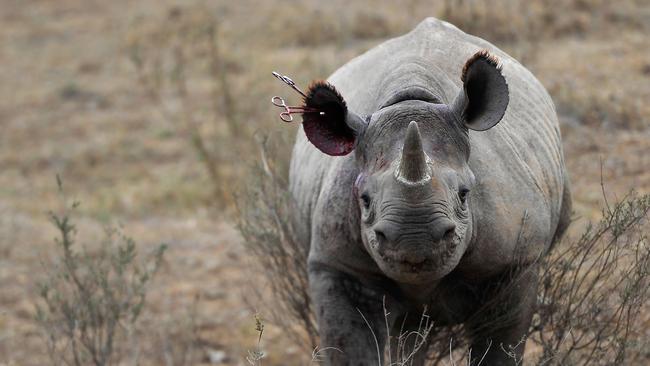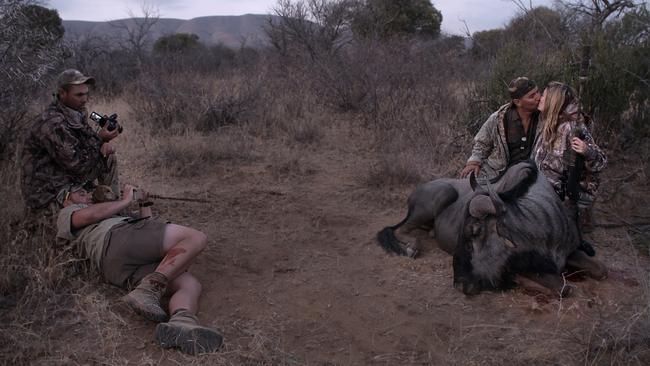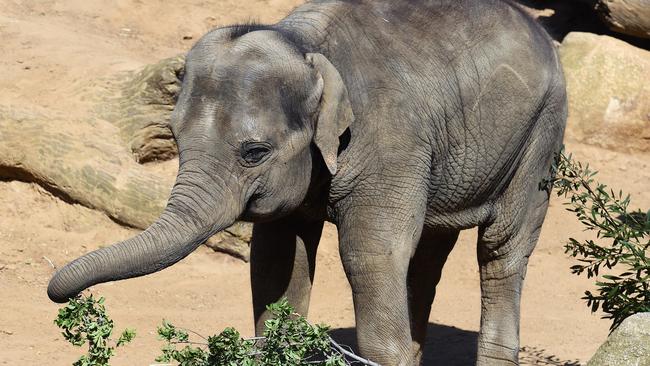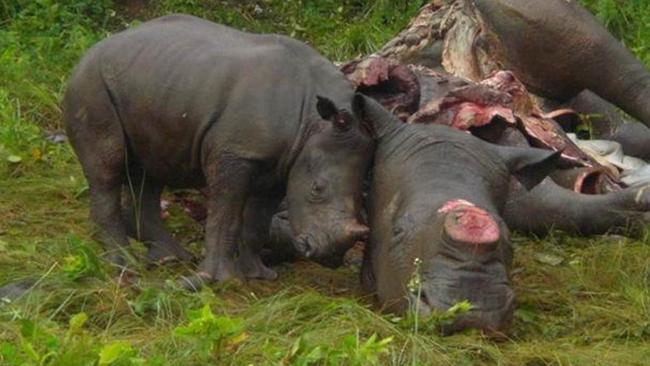Could trophy hunting be saving rhinos, elephants and lions?
HUNTERS have sparked outrage posing for photos with their big-game kills — but could it save rhinos, elephants and lions from the brink of extinction?
IT’S almost too easy to jet out to Africa and hunt a lion, elephant or rhino in its “natural habitat”.
A shocking new documentary film, Trophy, shows how massive conventions are now flogging package holidays for those looking for the perfect kill.
WARNING: DISTRESSING IMAGES BELOW
The only catch is, they often have to pay tens of thousands of dollars to slaughter some of world’s most iconic animals in their natural habitat — some say they are saving theses precious species at the same time as killing them.
“I did not know that you could simply go online and, within minutes, book a hunt for any animal that you desired — a lion, a cheetah, an elephant, even a critically endangered black rhino,” said internationally acclaimed film director, Shaul Schwarz, whose film explores the controversial subject.

“Could it be that simple? It is,” he said. “Hundreds of African outfitters will welcome you, lodge you, and provide legal permits for your hunt.”
Trophy hunting, the recreational killing of animals the killing of big game for a set of horns or tusks, a skin, or a taxidermied body has become a billion-dollar business.
Now a heated debate is raging over whether this money, some of which goes back into conservation, is worth the moral issues it raises and the market for killing and animal products that it feeds.
“The basic principal of supply and demand drives these businesses — the rarer and closer to extinction a species is, the higher the price for the kill,” said Schwarz.
The cost of some of these hunts is staggering.
For example, a 14-day, single elephant hunt in Namibia can cost around $105,000.
Some of that cash is reportedly used to fund conservation projects to protect the area’s wildlife and often the meat goes back into the local, predominantly impoverished, communities.
Felix Marnewecke, a guide and hunter who leads trophy tours, told National Geographic that a portion of the fee is paid directly to community members.

“I feel quite shitty when an elephant dies, but those elephants pay for the conservation of the other 2500 that move through here,” he told the magazine “Trophy hunting is the best economic model we have in Africa right now.”
“In the end it may save this place — and the elephants too.”
Problem solved then, right?
Mr Schwarz, says this couldn’t be further from the truth and some of the statistics he uses in the film are shocking.
He says big-game populations are dwindling because of pressure hunting, human encroachment, shifting climate norms, and widespread criminal poaching.
Since 1970, the world has lost over 60 per cent of all wild animals.
In 1900, there were 500,000 rhinos in the world. Now there are fewer than 30,000.
In 1900, there were 10 million elephants. In 2015 there were only 350,000 left.
And there are holes in this “hunting to save” theory. The profit-driven industry is overseen in some cases by corrupt governments and it feeds a demand for products from these animals — such as ivory.

The film also shows how the commodification of killing is becoming like a “fast-food culture” where hunters can go on “canned” expeditions — where they can kill lots of animals in a more enclosed environment. They are also far cheaper than the multiple day hunts.
In Trophy, US tourists are shown gunning down tied-up crocodiles at close-range hunts and celebrating in a “canned” experience.
Biologist and lion expert Craig Packer, told National Geographic the “kill to protect” argument isn’t justified.
“If hunters were shooting lions for a million dollars and returning a million per lion directly into management, they would be on solid ground,” he said.
“But lions are shot for tens of thousands of dollars, and very little of that goes into conservation.”
And, if these hunters really cared about the animals they claim to help protect — wouldn’t they be better not killing at all?
The link between hunting and conservation is nothing new. Prominent conservationists such as Charles Darwin and Ernest Hemingway were also big hunters.
But, trophy hunting and glorifying of big-game killing through social media have foisted it firmly back into the public eye in recent years.
The killing of celebrity lion Cecil in Zimbabwe three years ago created headlines around the world and outrage on social media.

The US dentist who killed the lion using a bow and arrow went into hiding and spent thousands on personal security.
Some hunters have claimed many those who are outraged by these pictures are hypocrites because they eat packaged meat and consume animal products from cruel, industrial-scale farming.
Trophy also explores how the animal parts from these incredible beasts are trafficked and how the hunting industry is feeding into it.
The filmmakers met with John Hume — who is the world’s largest private rhino breeder and founder/owner of Buffalo Dream Ranch, home to approximately 1500 rhinos in South Africa.
He says rhino horn is more expensive animal product in the world and it is worth more than gold.
The retired property developer publicly advocates for legalisation of the trade in rhino horn and took the South African government to court in order to lift a 2009 moratorium on rhino horn trade that triggered a massive spike in poaching.
He trims his rhinos’ horns every two years and has over five tons of horn currently stockpiled and claims the market for the substance is not going away. So, he is advocating for a transparent, legal market.
And, just this week, President Trump said that he was temporarily reversing his decision to lift the Obama-era ban on importing big game hunting trophies into the United States.
Could Mr Hume be right?
“There are no easy answer to these questions,” said Schwarz. “We hope Trophy becomes a first step bringing those oppositional forces together to ignite a healthy, informed debate on how to save these animals before they disappear.”
Trophy is available digitally via iTunes now.




